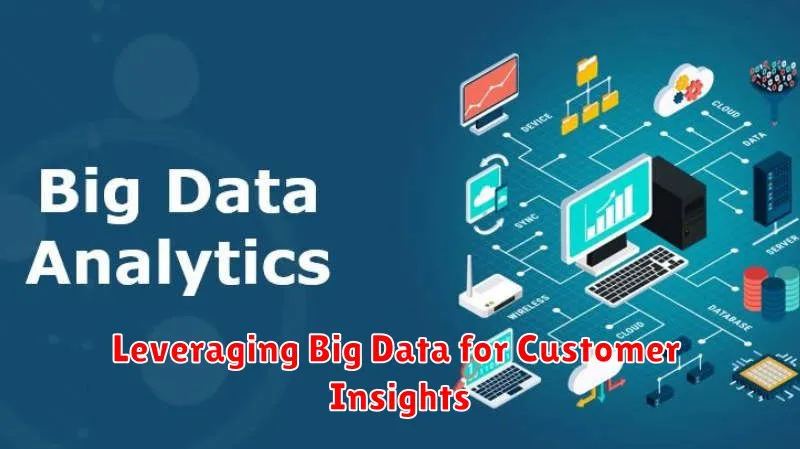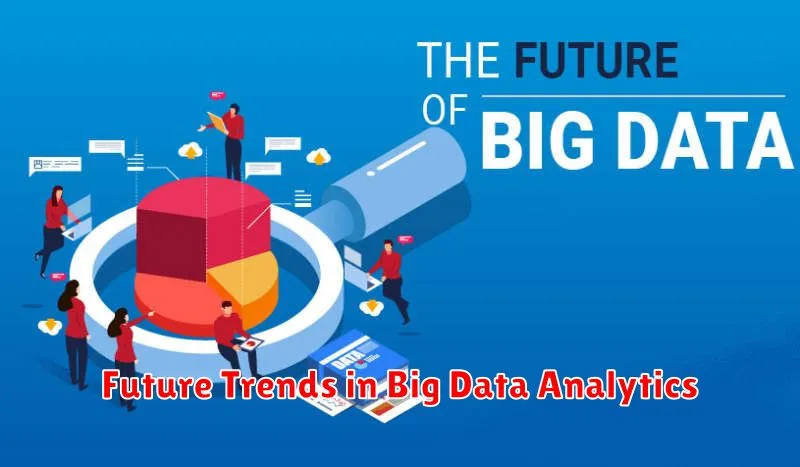In today’s rapidly evolving business landscape, leveraging big data has become crucial for organizations seeking to gain a competitive edge. Big data analytics allows businesses to extract valuable insights from massive datasets, unlocking hidden patterns, customer preferences, and market trends. By harnessing the power of big data, companies can make more informed decisions, optimize operations, and ultimately outperform their competitors. This article will explore the various ways organizations can use big data to achieve a significant competitive advantage in their respective industries, focusing on practical applications and strategic implementations.
From enhancing customer experiences and personalizing marketing campaigns to streamlining supply chains and predicting future demand, the potential of big data is vast. Understanding how to effectively collect, analyze, and interpret this data is essential for any organization seeking to thrive in the modern data-driven economy. We will examine real-world case studies and explore the key strategies employed by leading companies to unlock the transformative power of big data and achieve a sustainable competitive edge.
What is Big Data?
Big data refers to extremely large and complex datasets that are difficult to process using traditional data processing applications. It’s characterized by the “three Vs”: volume (the sheer amount of data), velocity (the speed at which data is generated and processed), and variety (the different types of data, from structured databases to unstructured text and multimedia).
A fourth V, veracity, is often added to describe the trustworthiness and quality of the data. Analyzing big data allows businesses to uncover hidden patterns, correlations, and other insights that can lead to better decision-making.
How Big Data Enhances Decision Making
Big data provides organizations with the ability to make more informed and strategic decisions. By analyzing massive datasets, businesses can uncover hidden patterns, trends, and correlations that would be impossible to identify through traditional methods.
This data-driven approach empowers leaders to move beyond intuition and make decisions based on factual evidence. The insights gleaned from big data analysis can be applied across various functional areas, leading to improved outcomes.
For example, in marketing, big data can help identify target audiences with greater precision, leading to more effective campaigns. In operations, it can optimize supply chains and predict equipment failures. These insights enable proactive adjustments and ultimately contribute to a stronger competitive advantage.
Leveraging Big Data for Customer Insights

Big data analytics plays a crucial role in understanding customer behavior and preferences. By analyzing large datasets from various sources, businesses can gain valuable insights into customer demographics, purchasing patterns, and online activity.
This data can be used to create detailed customer profiles, enabling businesses to personalize marketing campaigns, optimize product development, and improve customer service.
Key benefits of leveraging big data for customer insights include:
- Enhanced Customer Segmentation: Divide customers into distinct groups based on shared characteristics.
- Improved Targeting: Deliver personalized messages and offers to the right audience.
- Increased Customer Retention: Identify at-risk customers and implement proactive retention strategies.
Identifying Market Trends
Big data analytics plays a crucial role in identifying emerging market trends. By analyzing massive datasets, businesses can gain valuable insights into consumer behavior, preferences, and purchasing patterns. This information is essential for making informed decisions about product development, marketing strategies, and overall business direction.
Real-time data analysis allows companies to detect shifts in demand, anticipate customer needs, and respond quickly to changing market conditions. This agility provides a significant competitive advantage, enabling businesses to stay ahead of the curve and capitalize on new opportunities.
For example, analyzing social media data can reveal trending topics, product reviews, and customer sentiment towards specific brands or products. This information can be used to improve customer satisfaction, refine marketing campaigns, and identify areas for product innovation.
Optimizing Operational Efficiency
Big data analytics plays a crucial role in optimizing operational efficiency. By analyzing large datasets, businesses can identify bottlenecks, streamline processes, and improve resource allocation. Real-time data analysis allows for immediate adjustments, minimizing downtime and maximizing productivity.
For example, predictive maintenance, powered by big data, can anticipate equipment failures before they occur. This allows for proactive repairs and maintenance, reducing costly unplanned downtime. Furthermore, analyzing historical data can reveal patterns in customer behavior, enabling businesses to optimize inventory management and supply chain operations. This leads to reduced costs and improved customer satisfaction.
Challenges in Big Data Implementation
Implementing big data solutions presents several key challenges. Data volume, velocity, and variety demand robust infrastructure and efficient processing capabilities. Data quality is crucial, as inconsistencies and errors can lead to inaccurate insights. Security and privacy are paramount concerns, requiring stringent measures to protect sensitive information.
Skills gaps pose a significant hurdle, as organizations need skilled professionals to manage and analyze big data. Furthermore, integrating big data with existing systems can be complex and time-consuming. Finally, the cost of implementing and maintaining big data infrastructure can be substantial, requiring careful planning and resource allocation.
Tools and Technologies for Big Data
Effectively leveraging big data requires robust tools and technologies. Several categories of tools exist to handle the various stages of big data processing.
For data storage, distributed file systems like Hadoop Distributed File System (HDFS) are commonly used. Data processing frameworks such as Apache Spark and Apache Hadoop enable efficient analysis of large datasets. Data visualization tools like Tableau and Power BI help in understanding and communicating insights derived from the data.
Cloud computing platforms such as AWS, Azure, and Google Cloud offer a suite of managed services for big data, simplifying infrastructure management and deployment.
Ethics and Privacy Considerations
Leveraging big data for competitive advantage necessitates a strong ethical framework. Collecting and utilizing vast datasets raises significant privacy concerns. Organizations must prioritize data security and transparency.
Informed consent is crucial. Individuals should be aware of how their data is collected, used, and protected. Data anonymization and aggregation techniques can help mitigate privacy risks. Furthermore, organizations should establish clear data governance policies and procedures to ensure responsible data handling.
Compliance with relevant data protection regulations, such as GDPR and CCPA, is essential. Neglecting these ethical and legal obligations can lead to reputational damage and substantial financial penalties.
Case Studies of Big Data Success
Examining real-world examples illustrates the power of big data analytics. Netflix, for instance, leverages viewing data to personalize recommendations, driving subscriber engagement and retention. This data-driven approach allows them to predict popular content and even inform original content creation.
In the retail sector, Target utilizes purchase history to identify customer preferences and predict future buying behavior. This enables targeted marketing campaigns and optimized inventory management, resulting in increased sales and reduced waste.
Starbucks also exemplifies big data success. By analyzing customer loyalty program data combined with location information, they optimize store placement and tailor promotions to specific demographics. This leads to enhanced customer experience and increased profitability.
Future Trends in Big Data Analytics

The field of big data analytics is constantly evolving. Several key trends are shaping its future, impacting how businesses leverage data for a competitive edge.
Edge Computing will become increasingly important. Processing data closer to its source reduces latency and allows for real-time insights. This is crucial for applications like autonomous vehicles and industrial automation.
Artificial Intelligence (AI) and Machine Learning (ML) will continue to be integrated with big data analytics. This enables more sophisticated analysis, including predictive modeling and anomaly detection, leading to proactive decision-making.
The rise of the Data Mesh, a decentralized data architecture, will empower individual business domains to manage and access their own data products, fostering agility and data democratization.

